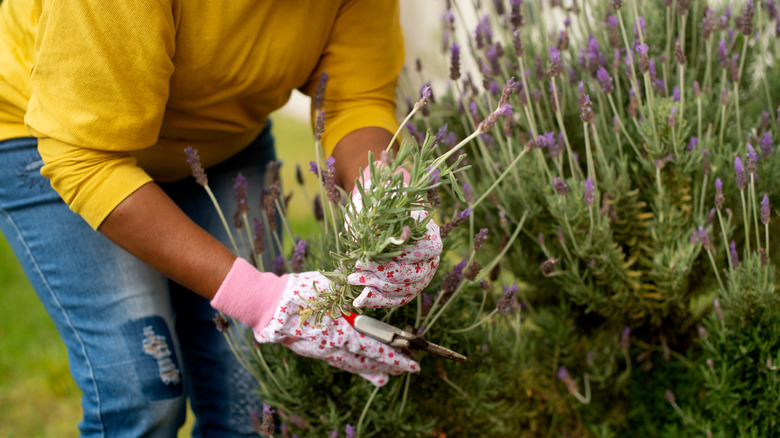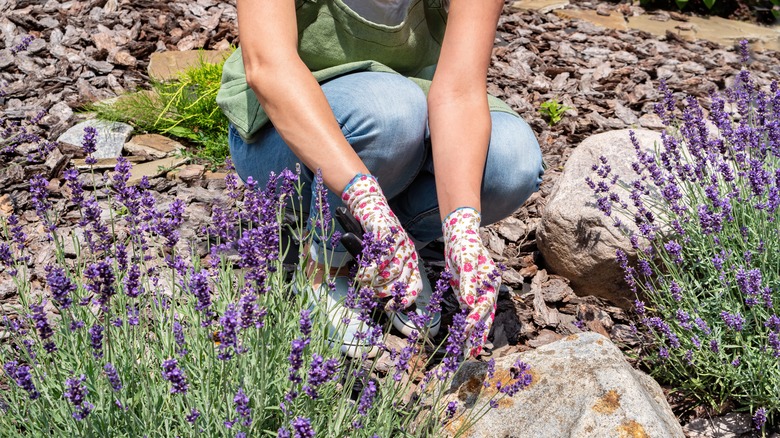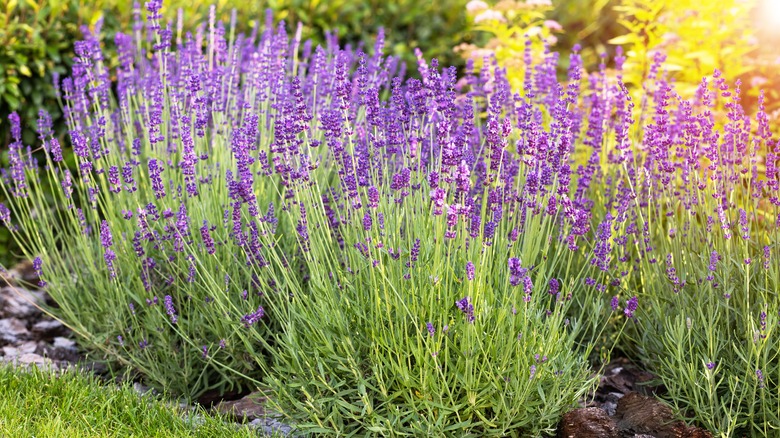Try This Clever Propagation Technique To Help Your Lavender Thrive
Lavender is a lovely addition to any home garden because it is not only an aromatic herb with medicinal properties but its sweet scent is also able to attract swarms of pollinators like dragonflies and keep pests like cats from digging in your yard. In fact, you may find lavender so lovely that you want more of it; however, before you run to the store and buy new plants, you should know that you can grow new lavender bushes yourself with minimal effort. This is because lavender is quite easy to propagate. While the traditional method of lavender propagation involves cutting branches at the stem and then transplanting the cuttings to pots and waiting for them to take root, there's another cleverer way to propagate lavender that you may not have heard of — layering.
Layering is a method of propagation in which you do not initially cut the branches from the original plant and, instead, bring a few branches down to the ground and bury them in the soil while still attached. The best thing about this method is that it is the most likely to be successful and often creates a large amount of thriving new lavender bushes. Furthermore, the layering method takes up less space because it doesn't require you to care for plant cuttings in pots indoors and instead allows you to simply use the soil around your existing lavender bush.
How to prepare for layering your lavender
The first decision you need to make when preparing to layer your lavender is what season you'd prefer to start the process in. Lavender can be layered in the spring and summer or fall and early winter. Which season you choose will determine what type of branches you need to layer. If you want to layer your lavender bush in the spring or summer while the plant is still growing, you should choose softwood stems and new green shoots to propagate. However, if you are layering your plant in the fall or early winter when the bush is heading towards dormancy, you should choose older hardwood branches. If possible, you should also choose the longest branches of your lavender bush that are already brushing against the ground.
Now that you know which branches to choose from your bush, it's time to prepare the soil. To do this, you should first clear the soil of any debris and then loosen it up with a shovel or rake. Also, before layering, it's always a good idea to add some type of garden fertilizer or compost to the soil to help give it all the important nutrients to make sure your lavender will propagate and grow strong roots.
How to layer your lavender for an endless supply
Now, it's time to start layering. To begin, you will need to shave off a small section of the outer skin of the lavender branches you've chosen to propagate with a knife. This shaved section should be small and located in the region of the branch that will be buried as it will be the place from which the new roots will grow. The shaved area should be just deep enough to expose the green inner flesh of the plant. If you are working with softwood or new shoots, you may be able to simply bend the branch until it slightly breaks, exposing the inner green of the plant.
The next step is to bury the exposed parts of each branch in the soil. You should cover each branch in around one to two inches of potting soil. If the weight of the soil isn't enough to hold the branch down, then you may need to cover it with mulch or a gardening staple. Next, all you have to do is water the plant normally and wait. This process can take one to two years. Once the lavender branches have grown new roots, simply cut the rooted branches from the parent bush and transplant them. And voilà! Your new lavender bushes will be exact genetic copies of the original.


